- Visitor:63
- Published on:
Discovering the Temples of Goa
Mahalasa is an important Shakti Devi and a very popular deity in Goa. The original shrine of this Goddess was at Verna in Salcate taluka. Mahalasa was one of the deities shifted to the Antruz Mahal in the wake of the reign of religious terror unleashed by Diego Fernandes, the Portuguese Captain of the Fort of Rachol that saw the demolition of over 280 Hindu temples in Salcete taluka in 1567.
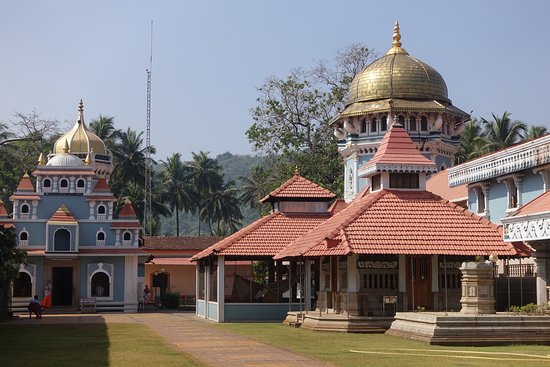
Discovering the Temples of Goa
I learnt about ‘Goa beyond beaches’ during the recent Pathik – Temple Trails and Stories Tour, which took us on a pilgrimage across some of the most exquisite, yet lesser-known Devasthanams of India. I was unaware of the existence of such a large number of temples in Goa; the common perception being that Goa comprises only of BBC – Beaches, Bars and Churches. Surprisingly, not much information about Goan temples is available – even the government Tourism website does not mention many of them. Few temples have their own website, but there too information is sketchy.
I have covered the history of Goa since ancient times in my previous article, which can be read at the link below. This articles covers the visit to the temples.
Introduction
We had a 4-day sojourn in Goa, with a packed itinerary. The leader of the group was Dr Pankaj Saxena, a renowned scholar on India’s history and heritage, particularly temples. His informal discussions throughout the trip provided great insights for all of us about our heritage, culture and traditions, and in particular of the places we visited. We were fortunate to have a local expert, Ms Sawani Shyete, a renowned archaeologist also accompany us. She was a storehouse of snippets and anecdotes about the places we visited, bringing to life the ancient sites, monuments and deities with her narrations.
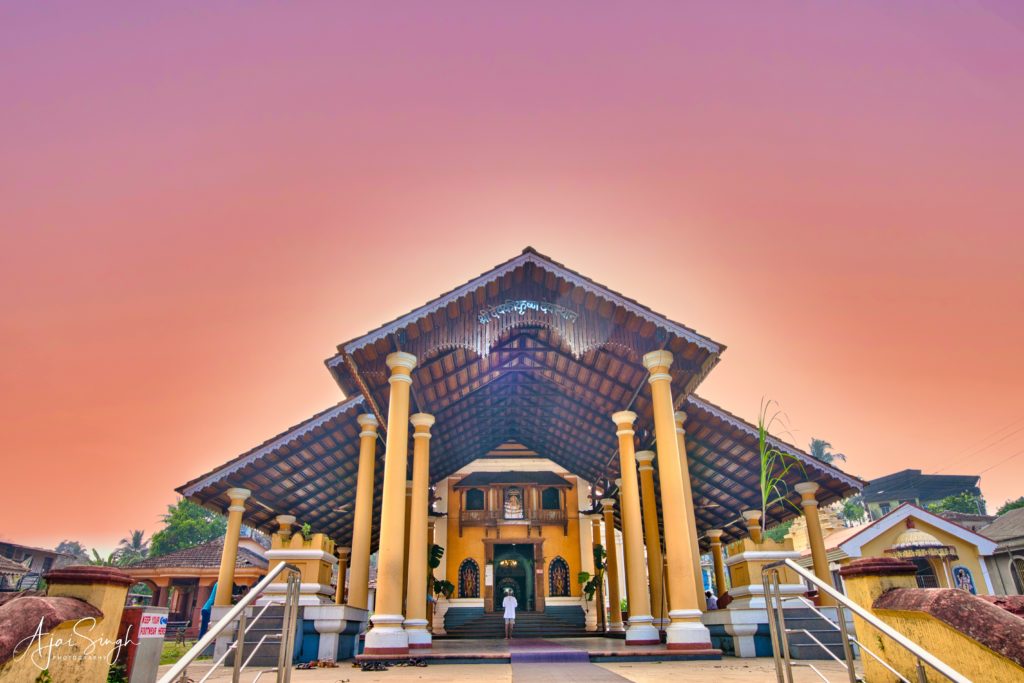
It should be understood that temples are not just structures of stone or bricks, they are living institutions which ensure the survival of our traditions, customs and communities associated with it. The importance of temples can be judged by the fact that our ancestors kept on reclaiming and rebuilding our temples despite repeated takeovers and destruction by marauding invaders. Some temples have been rebuilt almost 20 times, with the process spread over centuries. It is only due to such undeterred spirit and strong resolve shown by our ancestors that Sanātana Dharma and Hindu civilization has survived while all other ancient (pagan) civilisations of the world have been erased. The history of Hindu society since ancient times reveals that it has always been our Devi-Devatas who have guided us in establishing and protecting our Dharma, be it Shri Jagannātha leading Gajapati Purushottama Deva or Mā Bhawāni leading Chhatrapati Shivāji Mahārāj’s army. It is they who have nurtured, protected and sustained our civilisation. Thus, any attempt by Hindus to reclaim and reassert their identity and culture must begin from their doorstep..
Anatha Temple At Savoi Verem .
The first temple we visited was the famous Anatha Temple, the abode of Anatha (Vishnu), at Savai Verem in Ponda Taluka on the banks of River Mandovi. The gateway at the top of the flight of steps gives a view of the courtyard and the verdant green surroundings. Savai Verem has been an ancient settlement for both spiritual and secular learning. In the 11th century, this land was granted to the teacher and mentor of Shasta Deva, one of the early Kadamba rulers, as a gift in respect for his wisdom..

The temple is constructed in a rectangular shape which has an entrance from the east. The murti is carved in black basalt and Vishnu is shown in his Anantashayya (sleeping position where He rests on the multi-headed Seshnaga). Shri Laxmi, the consort of Vishnu, is sitting at his feet. This temple has a natural water tank that meets the temple requirements..
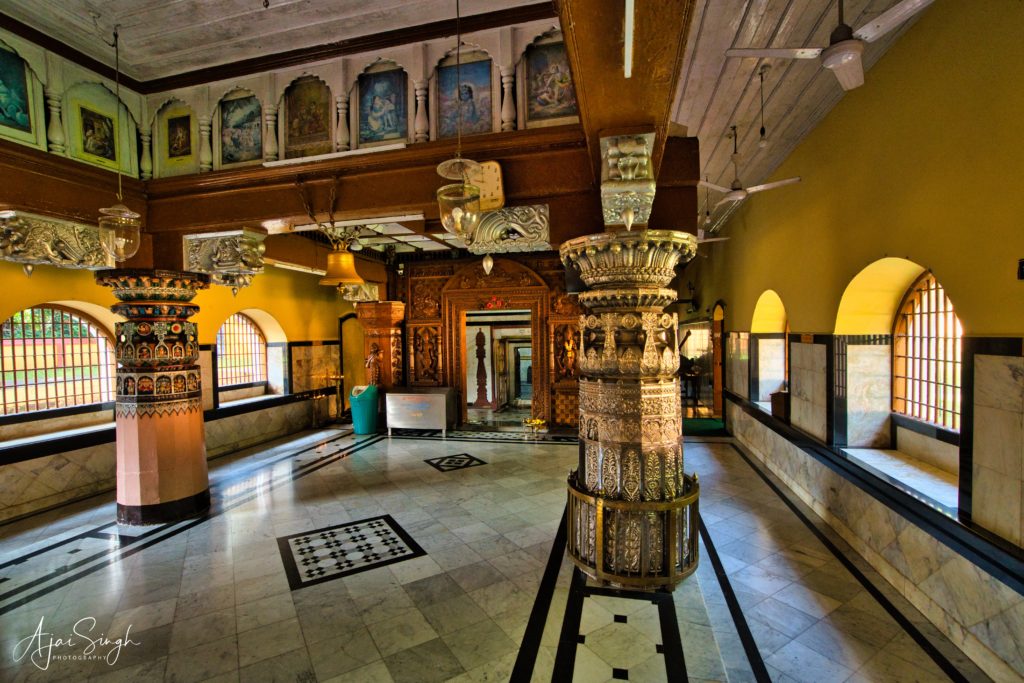
This temple, unlike other temples in Goa, has only a tiled pyramid roof and surprisingly no domes. The external walls are plain having a plaster finish. But the insides are in stark contrast to the outside. All the seven colours of the rainbow are showcased in the intricate wooden carvings. The pillars are encased in intricately carved silver plates. The current building is circa 1923.
Mahalasa Narayani Temple At Mardol
Mahalasa is an important Shakti Devi and a very popular deity in Goa. The original shrine of this Goddess was at Verna in Salcate taluka. Mahalasa was one of the deities shifted to the Antruz Mahal in the wake of the reign of religious terror unleashed by Diego Fernandes, the Portuguese Captain of the Fort of Rachol that saw the demolition of over 280 Hindu temples in Salcete taluka in 1567. This was the biggest temple of the times in South Goa. The present temple is situated near the Mardol market in Ponda taluka. The Sahyadri khanda mentions Mahalasa as one of the deities that was brought to Goa by the Brahmins who were settled here by Parashurama (Adhyaya 1, Shlokas 52-53).

The location of the temple, popularly known as Sthalakutumban, is rated as one of the most beautiful temple sites in Goa. The roof of the temple is plated with copper sheets and the sacred water tank is behind the temple. A majestic Deepastabha, a Garudastambha and Dnyanadeep, which is a tall brass lamp, and a shrine for Hanuman stand in front of the temple. At the entrance to the temple enclosure, the Mahadwara is surmounted by Nagarkhana or music chamber from where the Chaughada is played with the help of four types of drums.
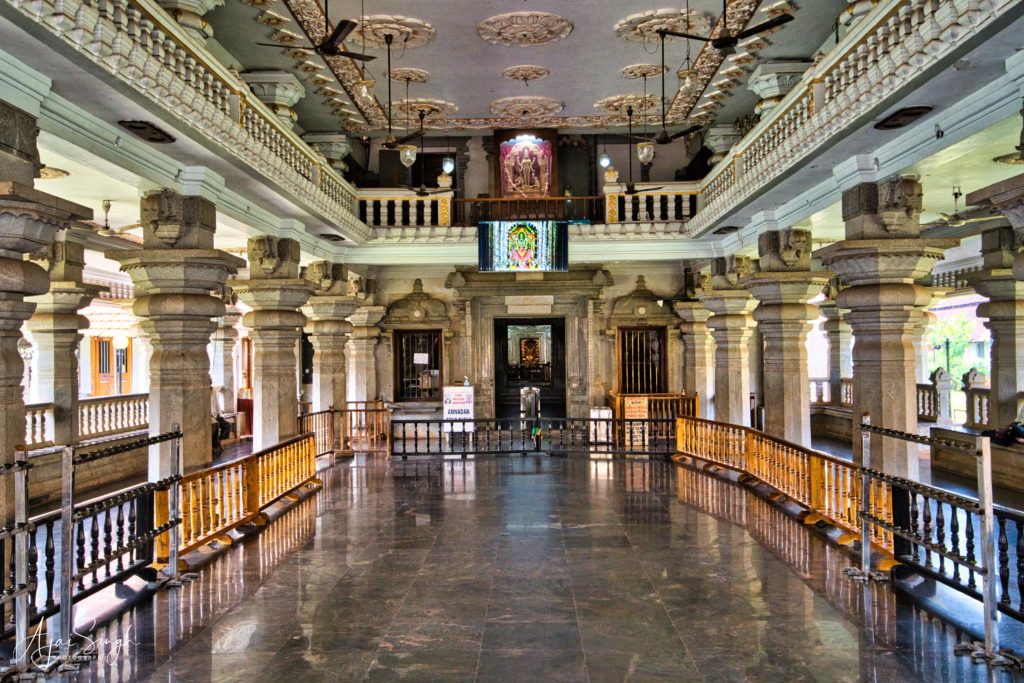
The temple was constructed in a rectangular shape like early medieval temples in this region. A circumambulatory passage covers all the three divisions of the temple. Hence it is a sandhara temple. Devi Mahalasa here is highly ornamented and is also attached with guardians and attributes. The superstructure of the sanctum has a domical sikhara and it is capped by a kalasa. To the right of the Mahalasa temple is a temple dedicated to Sateri, who is considered to be not just the parivar devata of Mahalasa, but her elder sister and who enjoys the honour of primacy.

Figure 6: The dnyanadeep
The cult of Mahalasa Narayani is scripturally rooted in the 8th and 9th Adhyayas of the Bhagwat Parana as the Mohini avatara of Vishnu who took the responsibility of distributing the amrit which emerged during the Samudra Manthan. Varunapuramahatmya of Sahiyadri khand, compiled between 500 CE to 1500 CE, mentions that Mahalasa was brought by Parashurama from Tiruhut (Bihar) and was consecrated in Verna in Salcete Taluka.
Manguesh Temple
The main temple is dedicated to Manguesh, an incarnation of Shiva and a regional deity of Goa. The shrine was originally located in Kushasthali, which was known as Kutthali in Konkani, becoming Cortalim after the Portuguese invasion. According to Manguesh Mahatmya, once Shiva and Parvati were playing chausar (dice) when Parvati won and she rebuked Shiva. This annoyed Shiva and he left for the Himalayas. Parvati then left home in search of Shiva. In the course of her search, she came to Kushasthali. When she was on her way to Aghanasini (River Zuari) for taking a bath, a ferocious tiger with a wide open mouth appeared in front of her. She was frightened and uttered trahi-mahi-girish (please protect me from the tiger). No sooner had she uttered the words, Shiva appeared from the body of the tiger. It is believed that the word Manguesh has its origin in ma-hi-Girish.
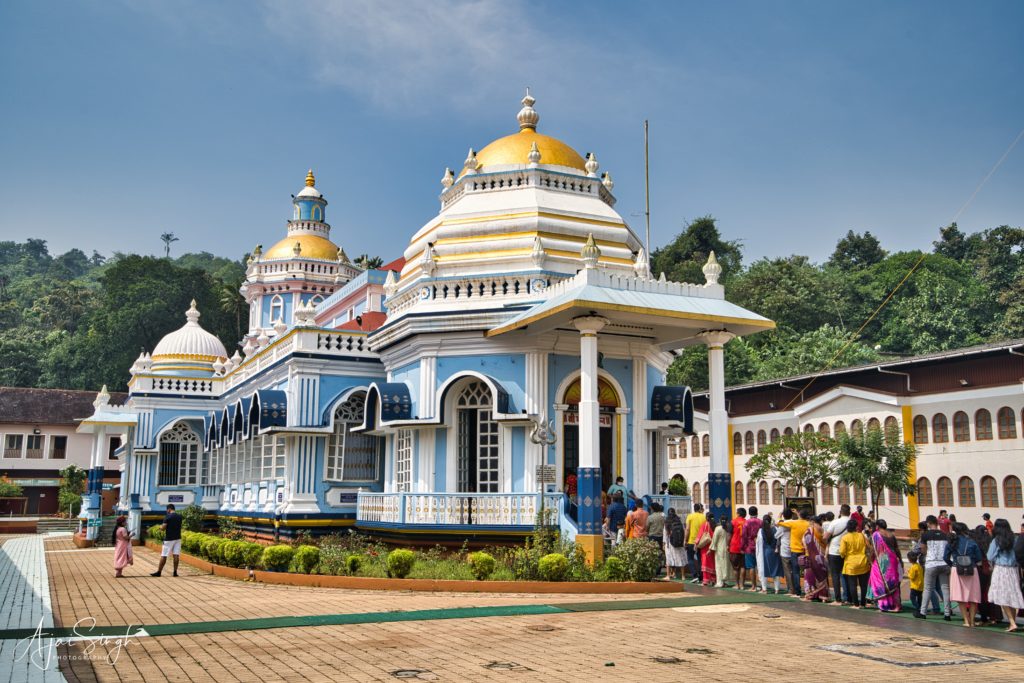
Figure 7: The magnificent Manguesh Temple
Gomanchalakshetra Mahatmyam (Adhyaya III, Shlokas 2 – 14) makes reference to the consecration of the Shiva linga on Mangirish Mountain at Trihotra in Bihar. The Saraswats then brought the vigraha to Goa.
Manguesh is the first deity which was shifted from its original site at Kushasthali. The Jesuit missionaries, Fr. Pedro Mascarenhas and Irmsio Manuel Gomes reached Cortalim on 1 May 1560 but found the murti missing as it had already been smuggled and brought to Priol in the Antruz Mahal via Madkai. The original temple was used to set up a temporary church and the Viceroy D. Antao de Noronha permitted transfer of all properties and income of the temple to this church. Subsequently, the temple was demolished and on the site a new church was built in 1566.

The temple faces north. The garbhagriha is a plain hall where the linga with panavatta is enshrined. The 3-division sanctum, middle chamber and antarala in a common hall show that it is a later temple architectural feature. The mukhamandapa of this temple is a circular hall, whichis a unique feature in temple architecture. Three domical sikharas, one each above the sanctum, sabhamandapa and mukhamandapa crown the superstructure of their respective structures in two-tiers (dwitalas).
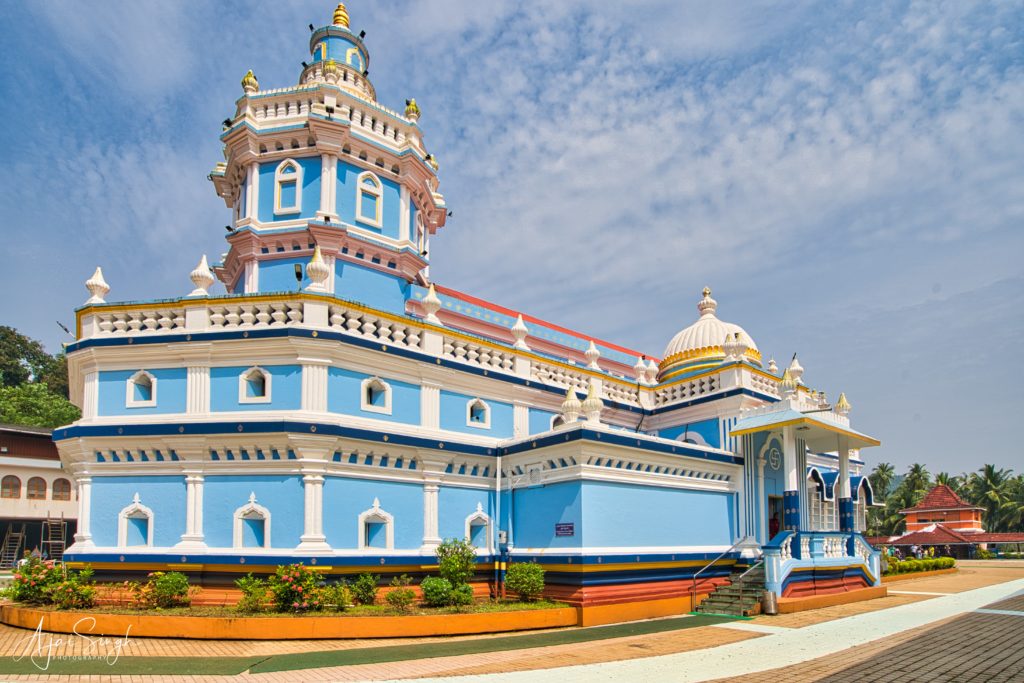
An octagonal shaped deepstambha adorns the northwest corner of the courtyard. A huge water tank with a Tulasi Vrindavan at the centre has been provided in front of the temple.
Ramnath Temple (Ramnathi)
The ancient linga of Ramnath was initially located in Loutulim in Salcete Taluka. In the 16th century, it was shifted to Bandivade due to religious persecution by the Portuguese. The linga of Ramnath had been brought from Rameshwaram to spread the teachings of Rama.

The temple is facing east and two female deities, Sateri and Kamakshi, are placed on either side of Ramnath in their individual kutas (cells). These three kutas in a make it a trikuta temple.

The entrance dwar of the Mukhamandapa is adorned with the Dasavataras of Vishnu. A golden palaki made of wood and gold sheets is exhibited by the side of Sateri kuta. The Sateri and Kamakshi kutas have independent porches in front and also have separate entrances. The superstructures of all the three deities are domical shaped, while the sabhamandapa and mukhamantapa have conical tiled roofs. A three-fold kalasa adorns the domical superstructure of the main deity at the top. A deepstambha and water tank are located in front of the temple.
There are separate shrines of Vetal and Kalabhairav on the southern side.

Most temples in Goa run free kitchens for devotees. Since we reached this temple around lunch time, we had lunch here. The food is plain but always tasty The scriptures stress on the importance of hygiene and devotion/love while cooking since it infuses positive energy in the food – one of the reasons that the taste of food a mother cooks is cherished for life.
Shri Naguesh Maharudra Temple At Bandivade Ponda
The term Naga means snake and Isha means Shiva. When the term naga is prefixed to Isha, then it becomes Niguesh. Here it implies the adorning of a snake by Shiva around his neck. The temple of Naguesh is situated at Bandivade in Ponda taluka. According to a Kannada inscription exhibited on a Hero Stone in the ASI Museum, Old Goa, King Sripala established village Bandivade. The Skanda purana mentions that like Mahalasa which was brought from Tiruhut, Naguesh too was brought from the same place.

The Saraswats established Naguesh Maharudra deity at Bandivade. Unlike other deities in Goa, Nagesh Maharudra found a safe abode since its consecration and never required to be shifted. Antruj Mahal was not under the control of the Portuguese and this facilitated the migration even of other Saraswat deities like Shanta Durga, Ganapati etc to Antruj.
There is an inscription in the temple premises which makes reference to gift of land in favour of the deities in the year 1413 CE (1335 Saka) during the rule of King Veer Pratap Devaraya of Vijayanagar Dynasty. The present building has been renovated and reconstructed around 1880.

The ground plan of the Naguesh temple is rectangular. The temple consists of a square garbhagriha and an antarala, mukharnandapa and a rectangular sabhamandapa with a front porch. The domical shikhara has an octagonal base at the bottom and a kalasa on top. The Naguesh murti is in the middle, on the right is Ganpati and on the left Laxmi Narayan. The ceiling and walls are beautifully decorated portraying events from the Ramayana on one side and images of Astadikpal and Gandharva on the other. A decorated deepstambh is located on one side.

A large water tank (pushkar) built with huge laterite walls is located in front of the temple. Beautiful verdant green plantations of areca palms and spices surround the tank, providing a serene and meditative environment.
Sri Mahalakshmi Temple At Bandoda Ponda
Sri Mahalakshmi temple is situated at Bandoda in Ponda Taluka. Three shrines of Mahalakshmi are found in Goa, located at Colva (Salcete), Netravali (Sanguem), and at Bandivade. The Sahyadri kanda mentions Mahalaxmi as one of the deities that were brought by the Brahmins. The peaceful or Satvika form of the Devi at this temple has a unique feature – she wears a linga on her head.

Portuguese records mention Mahalaxmi (Malcumi) temple among those that were destroyed in 1567. The utsav vigraha, made of panchloha (five metals) at Colva was shifted to the temple of Mahalaxmi at Bandora during the Portuguese inquisition. Two fishermen, Sapta and Phato, carried the Utsava murti in a box to save it, travelling by boat along the Arabian Sea, crossed the Rasai River and reached Talawal or Durbat in Atruja. As a reward, a small hut was constructed in front of the main temple housing two lingas which are token representations of the two fishermen.

The sabhamandapa has a beautiful art gallery with twenty two images of Vyuha – all woodcarvings in bold relief. This gallery is considered to be one of the rare ones of its kind in the whole of the Indian sub-continent.
A monolithic deepastamba erected in front of the temple dates back to the medieval period.
Lakshmi Narasimha Temple Veling
Dedicated to Narsimha, this temple was moved from Sankhavali (Sancoale) to Ponda in 1567, with the deities of Sri Vijayadurga and Sri Shanthadurga, to save them from destruction by the Portuguese. Vishnu, in his form of Narasimha, the 4th incarnation, is worshipped here along with his consort Lakshmi.
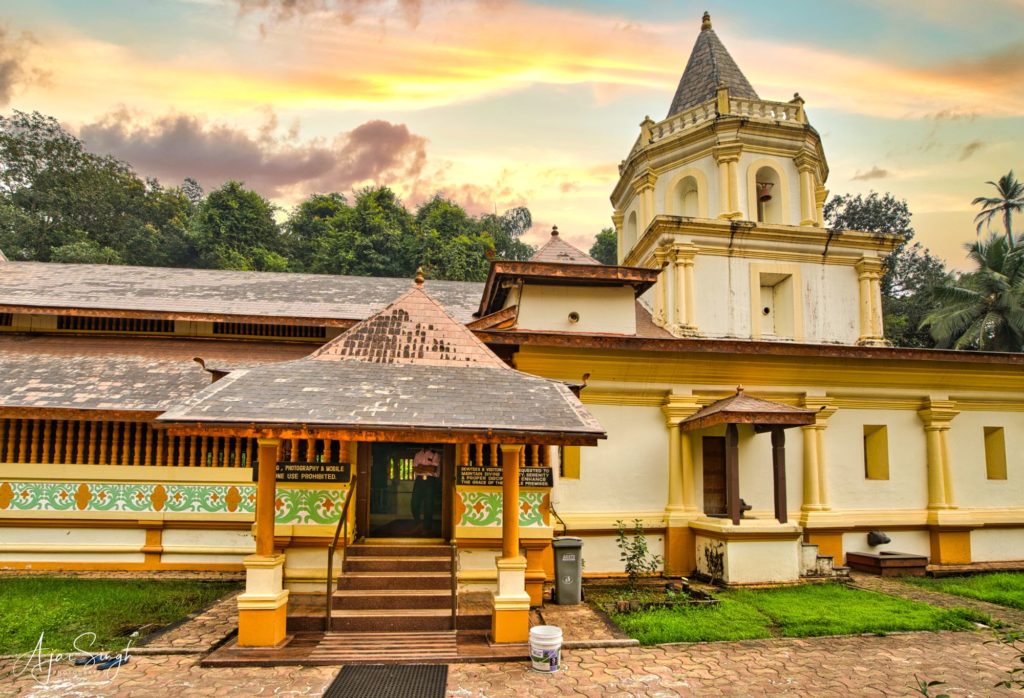
The current temple structure with all the wooden columns and carvings was built in the 18th century. The carvings, especially the ones depicting tales from Narsimha Purana are beautifully executed.
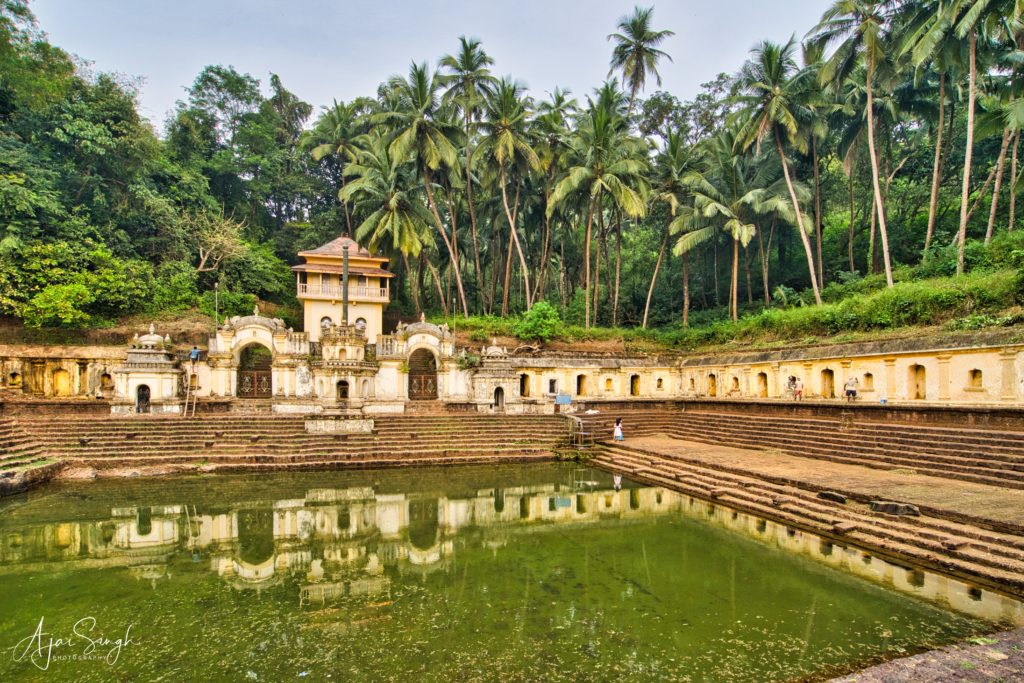
An eternal sweet water spring comes from the hills surrounding Veling, filling the stepped pushkar (water tank) of the temple. Since the tank is surrounded with coconut palms which help shading the area, it provides a serene environment. There is a musicians gallery on the opposite side of the water tank, facing the temple.
Mahadev Temple at Tambdi Surla
A matured form of Kadamba architecture with the influence of Hoysala and Kalyani Chalukyas can be seen in the Mahadev temple at Tambdi Surla, a village in Sanguem taluka near Anmod Ghat. The temple is dedicated to Shiva and dates to the 12th century. It is the region’s oldest shrine. The temple is named after the brownish-red earth typical of the area (Tambdi means ‘red’).
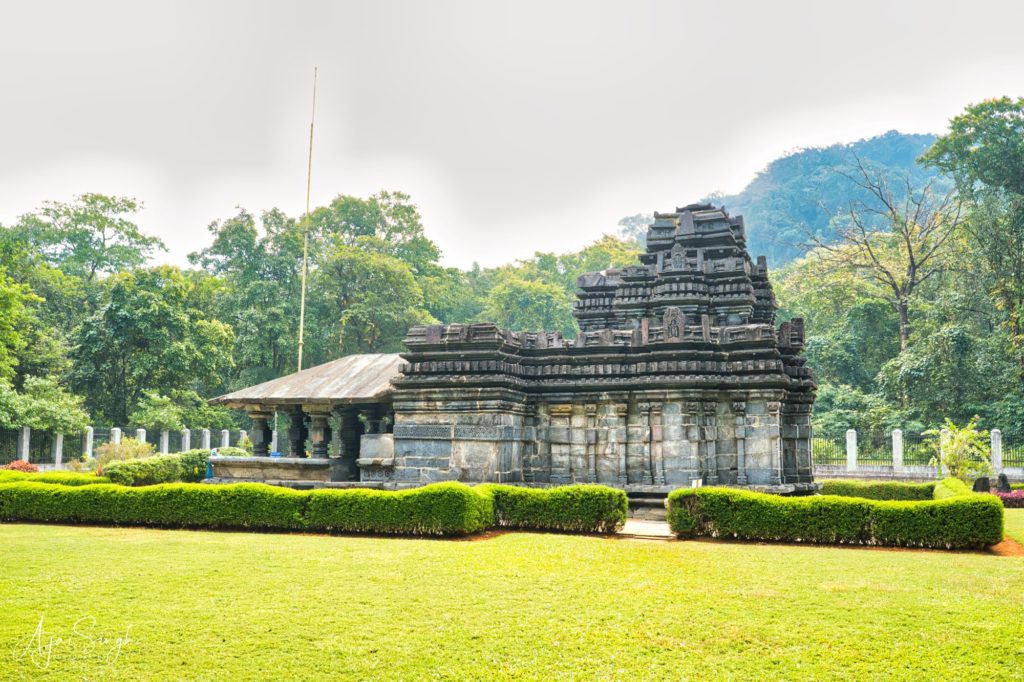
The temple was built from grey-black basalt, carried across the mountains from the Deccan plateau and lavishly carved in situ. The temple faces east and the rays of the rising sun fall on the deity at the crack of dawn.
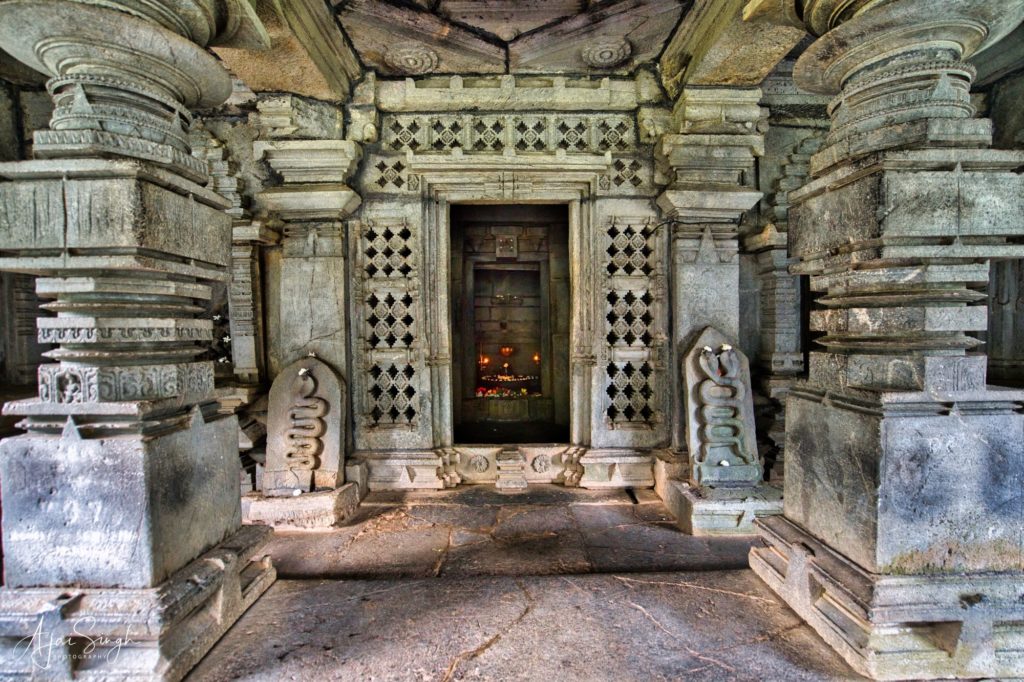
The simple plan of the Astabhadra consists of a sanctum sanctorum(garbhagriha) for the main deity; Antarala (vestibule) and Nandimandapa or sabhamandapa with three side entrances, which belong to a Nirandhar temple. The roof of the mandapa is sloping (gable-shape) while the superstructure of antarala and garbhagriha is Kadamba-Nagara (stepped pyramidical) style. Though the temple is simple but carvings in the mandapa pillars, lotus medallion or rosette in the ceilings and carvings on the external walls are excellent. The symbol of the Kadamba kings – an elephant trampling a horse – is carved at the base of one of the pillars.

A linga with panavatta is enshrined in the temple and its abhishekajal flows towards the north. Bas-relief figures of Shiva, Vishnu and Brahma, with their respective consorts appear on panels on the sides of the temple.
River Surla flows nearby and can be reached via a flight of stone steps.
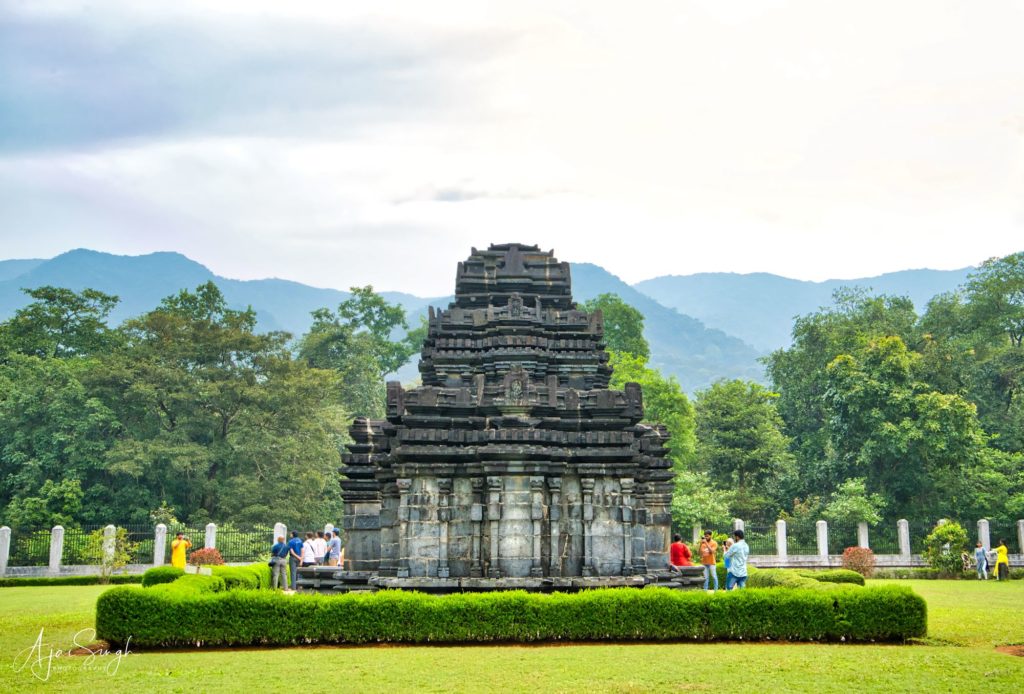
The Mahadev temple at Tambdi Surla survived Muslim invasions and Portuguese persecution in almost perfect condition due to its remote location deep in the forests at the foot of the Western Ghats.
Shanta Durga Temple of Kavle
The impeccable beauty of the surroundings and the spiritual energy emanated by the temple of Shantadurga is an ennobling experience. Shantadurga features among the deities of the Saraswat Brahmins who came to Goa at the call of Parashurama being a form of Parvati specific to the Konkan belt. She is also called ‘Santeri’ colloquially.
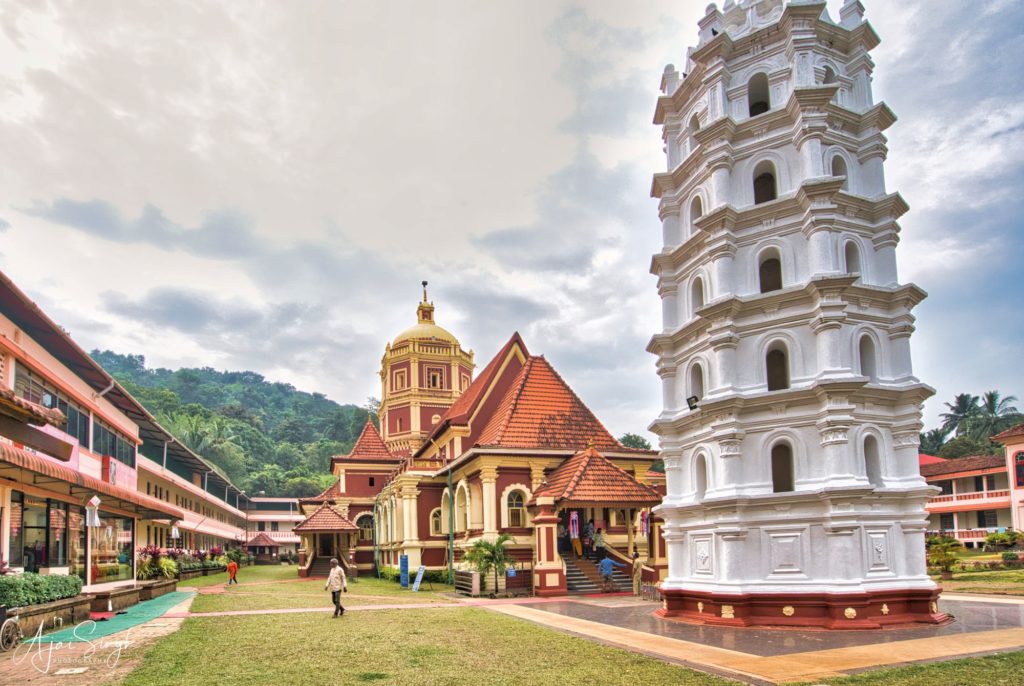
A scriptural reference comes in the Durgasahastranamastotram of the Durgamahatmyam in the Ambika khanda of Skanda purana. Shantadurga is mentioned as the goddess who pacified Shiva and Vishnu who were engaged in a cataclysmic battle with each other for several aeons. Brahma prayed to Parvati to intervene, which she did in the form of Shantadurga. She placed Vishnu on her right hand and Shiva on her left hand and settled the fight. The murti is thus shown holding two serpents, one in each hand, representing Vishnu and Shiva.
The seals mentioning the deity are available from 12th century CE. The original temple was located at Quelossim (Keloshi) in Salcete and it was destroyed by the Portuguese in 1564. The vighraya was however, smuggled to Kavale and worship continued there in a makeshift shrine. The current temple construction commenced in 1730 during the reign of Maratha ruler Chattrapati Shahu, the grandson of Shivaji Maharaj and completed in 1738. Subsequently, the village of Kavale was bequeathed to the temple by Shahu in 1739.

The temple faces northand the superstructure of the sanctum has a unique two-fold domical shikhara with square base with a circular railing. A three-fold kalasha crowns the domical shikhara, a slanting tiled roof covers the mandapa and a deepastambha stands in front of the temple. There is a large water tank in the front.
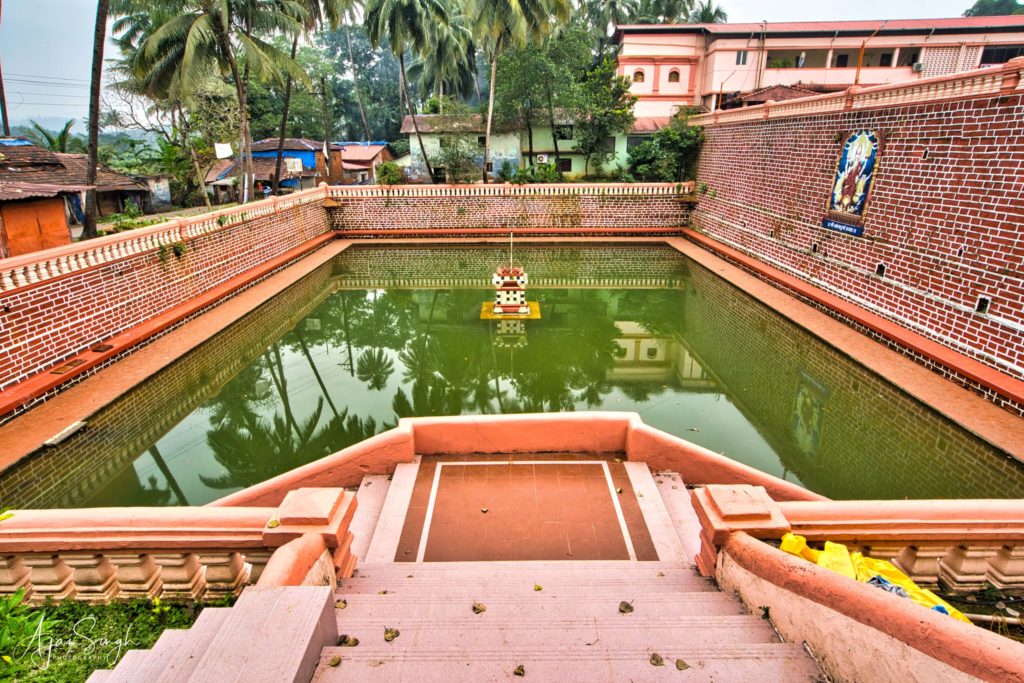
The Shantadurga temple of Kavale is one of the finest examples of amalgamation of architectural styles with its pyramidal shikharas, sloping roofs, multi-arched Roman windows with stained-glass windows and chandeliers.
Shri Navadurga Temple Madkai
Shri Navdurga temple is situated at Madkai (pronounced in Portuguese as Madcaim) in Ponda Taluka. The temple is dedicated to Navadurga. Navadurga or Mahishasuramardini is a fierce avatar of Durga. The temple was originally consecrated in village Gaumshi in Tiswadi by the Saraswats who migrated from Verna. However, the temple was demolished by the Portuguese. The properties of the temple were handed over to the College of St Paul.
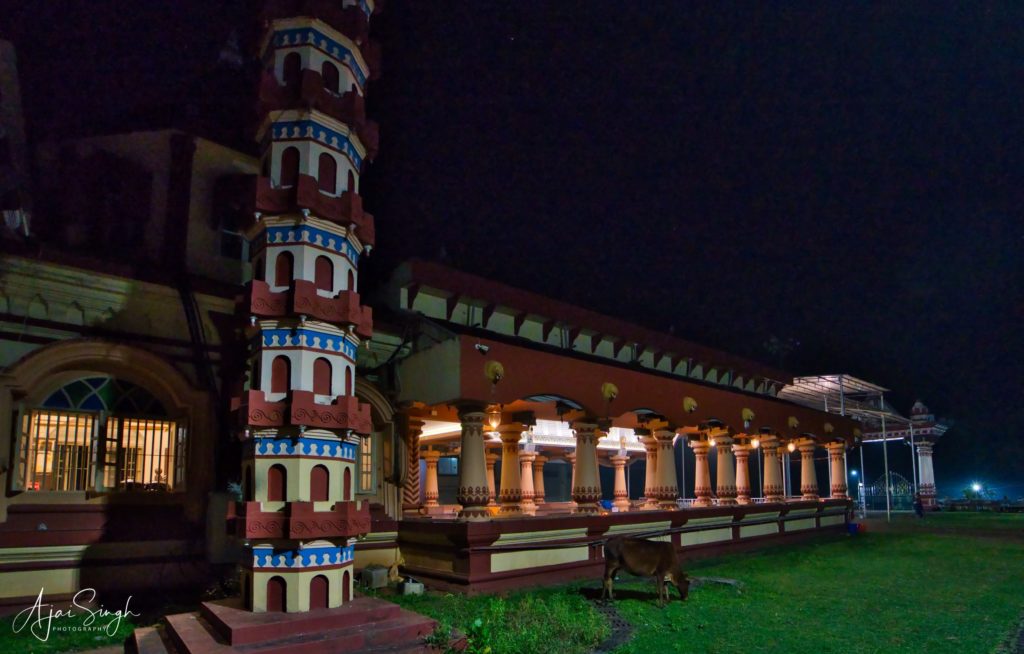
The temple is almost 500 years old and was renovated in 1603 CE. The copper inscription of the grant made for the original temple is reported to exist in the archives and dates back to the year 1128 CE.
The temple at Madkai faces west. The stone murti of the Devi is placed on a raised platform in a standing position and is four feet tall. The peculiarity of this image is that the head of the devi is depicted tilted to the left. A unique attraction of the temple is the wooden carvings of the Vedic Devas with their consorts and vahanas, adorning the walls.
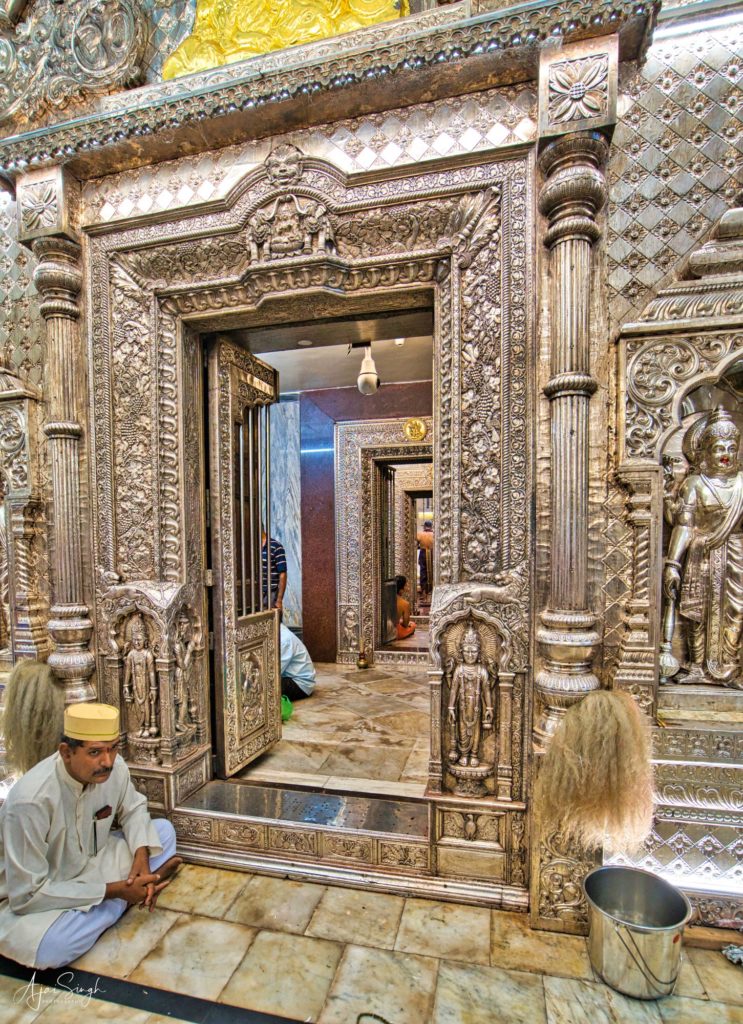
We met the Pradhan Archak Makarand Ghaisas and it was a pleasure to see the ‘tejas’ on his face as he took us around the temple and conveyed extracts from the ancient scriptures in our interaction with him. He was very knowledgeable and meeting him was a humbling experience.

That day was Shukla Navami when the murti of Ma Bhawani would be taken out in a palaki. The whole village seemed to be present for the event. The reverberating music of beating drums and ringing bells during the aarti ensured that all present were transported to another level, and when the radiant golden murti emerged in the bedecked palaki, the divine experience was complete. One could feel the energy pulsating through the temple.
Devaki Krishna Temple of Marcel
The village of Marcel exudes with devotion. The commitment that Mashelkars have shown of offering shelter and protection to the endangered Hindu deities during the terrible saga of temple destruction in the 16th century is exemplary. Numerous Devis and Devatas made Marcel their cherished abode in the aftermath of that dark period. As such Marcel has turned out to be a miniature heaven on earth. Marcel happens to be the village with the maximum number of temples of more than 15 deities. It
- 31 min read
- 0
- 0










